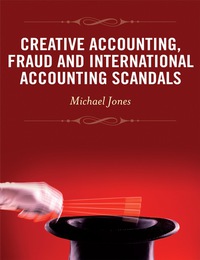Answered step by step
Verified Expert Solution
Question
1 Approved Answer
Chapter 9 - Questions 1 . Where there is evidence that the utility of inventory goods, as part of their disposal in the ordinary course
Chapter Questions
Where there is evidence that the utility of inventory goods, as part of their disposal in the ordinary course of business, will be less than cost, what is the proper accounting treatment?
Why are inventories valued at the lowerofcostornet realizable value LCNRV What are the arguments against the use of the LCNRV method of valuing inventories?
What approaches may be employed in applying the LCNRV procedure? Which approach is normally used and why?
What methods might be used in the accounts to record a loss due to a price decline in the inventories? Discuss.
What factors might call for inventory valuation at sales prices net realizable value or market price
Under what circumstances is relative sales value an appropriate basis for determining the price assigned to inventory?
What are the major uses of the gross profit method?
Chapter Questions
What are the major characteristics of plant assets?
Indicate where the following items would be shown on a balance sheet.
a A lien that was attached to the land when purchased.
b Landscaping costs.
c Attorneys fees and recording fees related to purchasing land.
d Variable overhead related to construction of machinery.
e A parking lot servicing employees in the building.
f Cost of temporary building for workers during construction of building.
g Interest expense on bonds payable incurred during construction of a building.
h Assessments for sidewalks that are maintained by the city.
i The cost of demolishing an old building that was on the land when purchased.
Two positions have normally been taken with respect to the recording of fixed manufacturing overhead as an element of the cost of plant assets constructed by a company for its own use:
a It should be excluded completely.
b It should be included at the same rate as is charged to normal operations.
What interest rates should be used in determining the amount of interest to be capitalized? How should the amount of interest to be capitalized be determined?
How should the amount of interest capitalized be disclosed in the notes to the financial statements? How should interest revenue from temporarily invested excess funds borrowed to finance the construction of assets be accounted for?
To what extent do you consider the following items to be proper costs of the fixed asset? Give reasons for your opinions.
a Overhead of a business that builds its own equipment.
b Cash discounts on purchases of equipment.
c Interest paid during construction of a building.
d Cost of a safety device installed on a machine.
e Freight on equipment returned before installation, for replacement by other equipment of greater capacity.
f Cost of moving machinery to a new location.
g Cost of plywood partitions erected as part of the remodeling of the office.
h Replastering of a section of the building.
i Cost of a new motor for one of the trucks.
What are the general rules for how gains or losses on retirement of plant assets should be reported in income? resolver
Step by Step Solution
There are 3 Steps involved in it
Step: 1

Get Instant Access to Expert-Tailored Solutions
See step-by-step solutions with expert insights and AI powered tools for academic success
Step: 2

Step: 3

Ace Your Homework with AI
Get the answers you need in no time with our AI-driven, step-by-step assistance
Get Started


